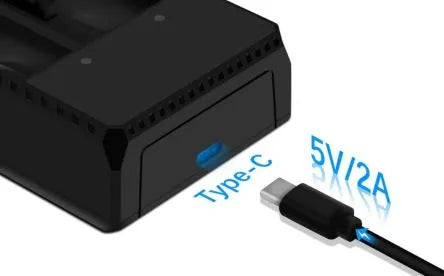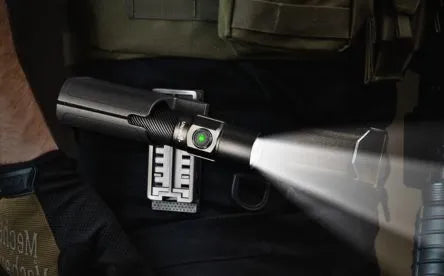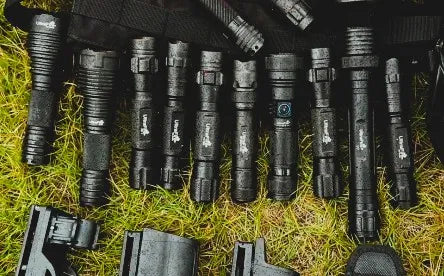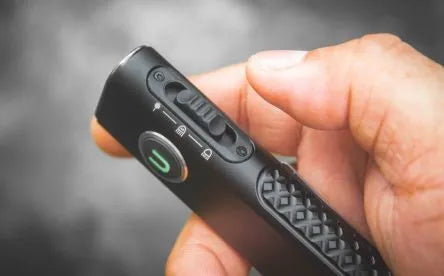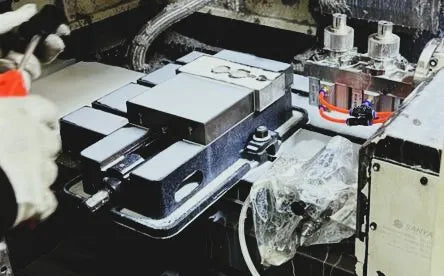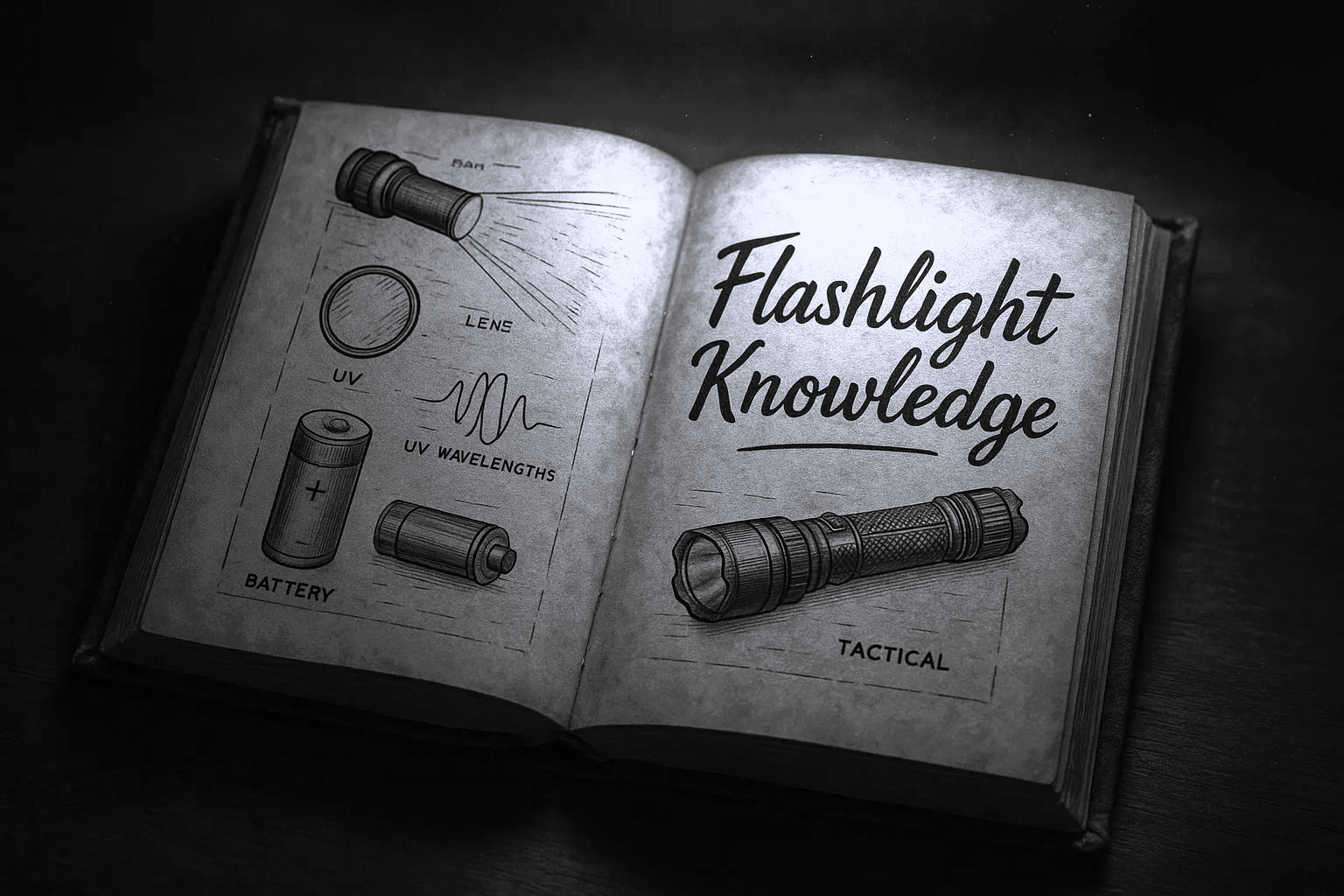Q1: Do you really offer a three-year warranty?
Let's learn,are you ready?
Don't come back, do it with Ultrafire!
Flashlights History
Discover how flashlights earn the slot of a handy and portable device in our everyday lives. Read about the electric-light history and the geniuses behind the curtains that played a role in technology advancement over the years.

Intro:
In the 1890s, the founder of the American “Ever-Ready” Company, Conrad Hubert, lit up New York City with the assistance of dry cell batteries and his newest invention - the electric hand flashlights. Hubert experimented with almost every diverse idea, from electric tie tacks to electric flower pots, before acquiring the patent for this first ‘Ever Ready” electric flashlight in 1898.
He hand-assembled his first portable flashlight, created from crude paper and fiber tubes, with a bulb and a rough brass reflector. However, as the batteries were low-power and bulbs primitive, flashlights of the era emitted only a flicker of light- thus the name. They had to undergo numerous experiments concerning newer shapes, colors, sizes, features, and uses.
But, the spirit of innovation was a factor that remained constant throughout. From creating the first waterproof flashlights in 1970 to being at the forefront of advances in LED technology, our lighting products offer unmatched performance and durability that you can rely on.
The simple construction of a flashlight:
The basic flashlight structure: housing (acts as part of the wires, incorporates switches), led/light beads, circuit, and battery are the main components.
Mainly classified into three groups:
1. Long-range strong light flashlight: possess a big reflector as the central feature that allows more light to reflect and become brighter and illuminate farther.
2. Zoom type strong light flashlight: The main specification is that the flashlight mirror is not glass but a convex lens. Like our magnifying glass, it can put the light into a group or evenly turn the light into a piece.
3. Floodlight flashlight: contains a small reflector as the highlighted feature. So, it reflects less light, and the brightness is lower. Although it is not very far, it has a wide range of illumination.

How do flashlights work?
1 - Case A tube-like structure that houses the sensitive parts of the flashlight, including the batteries and lamp (light bulb).
2 - Contacts A very thin spring or strip of metal (usually copper or brass) extended throughout the flashlight, sparking the electrical connection between the various parts – the batteries, the lamp, and the switch. These parts, in turn, collectively conduct electricity and effectively combine to complete the circuit.
3 - Switch Act as an electricity flow controller which gets activated when you push the switch into the ON position, giving you light. Similarly, when the switch is pushed into the OFF position, the flow of electricity is disrupted, turning off the light.
4 - Reflector A plastic part, coated with a shiny aluminum layer that is spread across the lamp (light bulb), and helps in redirecting the light rays from the lamp to allow a steady light beam, resulting in the light you see emitting from the flashlight.
5 - Lens The lens is the clear, plastic part you see on the front of the flashlight and work as a protective layer for the lamp since the latter is made of glass and can get damaged.
6 - Lamp The light source in a flashlight. In most flashlights, the lamp is either a tungsten filament (incandescent bulb) or a light-emitting diode (solid-state bulb), also known as an LED. The tungsten filament or LED glows when electricity flows through it, thus producing visible light. Tungsten is a natural element, and its filament is often in the form of a very thin wire. If the delicate wiring breaks by any chance, it then requires a replacement to revive normal functioning. On the other hand, An LED contains a small semiconductor (diode) encapsulated in epoxy, emitting light when electricity flows through it. LED flashlights are widely considered "unbreakable" and rarely replaceable– a lifetime lamp.
7 - Batteries When activated, the batteries are the ultimate power source for your flashlight.
Whether you happen to be outdoors for a nighttime adventure or find yourself stuck in the dark due to a power outage after a storm, portable light is a gift of convenience. All you are required to do is, press a simple button on your flashlight. But, just how does a flashlight work?

How do all these flashlight parts work together?
When the flashlight switch gets pushed into the ON position, it makes contact between two contact strips, initiating a current flow powered by the battery. The batteries are connected such that electricity (flow of electrons) runs between the positive and negative electrodes. The batteries rest atop a small spring, connected to a contact strip.
The contact strip runs down the length of the battery case and makes contact with one side of the switch. There is another flat contact strip on the other side of the switch, running towards the lamp (light bulb) and providing an electrical connection.
Similarly, one remaining side connected to the lamp makes contact with the positive electrode of the top battery, thus completing the whole circuit and generating electricity.
When activated by electricity, the tungsten filament or LED in the lamp begins to glow, producing visible light. This light reflects off of the reflector, positioned around the lamp. It then redirects the light rays from the lamp, creating a steady beam of light, which is the light you see emitting from the flashlight. Also, a clear lens covers the lamp in your flashlight so that the glass part does not get broken.
When the flashlight switch is finally pushed into the OFF position, the two contact strips physically move apart, breaking the path for the electrical current. Thus, it ends the light production and turns your flashlight off.
All the battery parts must be connected and in place for the portable flashlight to work. Otherwise, you will have an open circuit, and the electricity will not flow.
How to choose our flashlights?
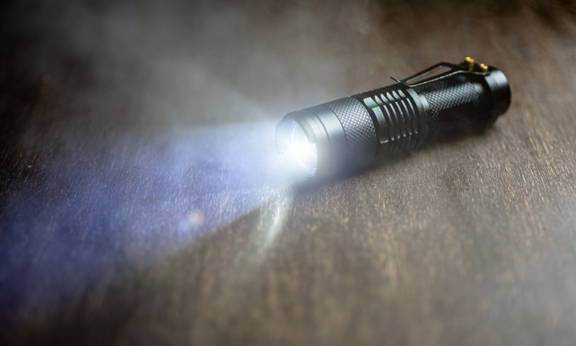

UltraFire makes serious lighting tools. We make them for a wide variety of applications, but typically, there is no one light that works well in all situations. Flashlight choice depends on intended use. You need to consider your applications and how you will be using the light to select the light that's best for your specific needs.
To help you determine the right light for you, UltraFirecreated an interactive.
First of all, WHAT IS FACULA?
Facula, shine a strong flashlight on the wall, we generally call the brightest part: facula.

1. Long-range strong light flashlight: This facula is small and bright, but the peripheral light around it is relatively dark. Thus, the contrast between light and dark is big. The glasses will be easily fatigued if used for walking. It is more suitable for exploration, search and rescue patrols scenes.
2. Zoom flashlight: By zooming, the facula will become larger further, and the brightness remains uniform, but there is no residual light around it. If you walk with a large facula, it won't be far away and will have relatively higher brightness attenuation. It is more appropriate for data review, equipment maintenance, or filling a scene with light for photography.
3. Floodlight flashlight: It possesses a large and bright facula, and the peripheral light surrounding it is likewise luminous. The seamless transition between light and dark makes it ideal for hiking and riding.

Several common misunderstandings of flashlight purchase

Brightness is not the higher, the better.
1. The first method to improve the flashlight brightness is by enhancing the comprehensive platform from the lamp head to the reflector, the battery, and the main puller design.
Renowned international and local brand products have undergone rigorous design and testing to assure long-term performance and safety.
The second method is by increasing the voltage and current to achieve. The overheating of the rear and inner feet is immense because the two do not match, resulting in frequent burning of the lamp head. Also, it leads to frequent over-discharge of the lithium battery, which can only be lit for a few minutes and often requires maintenance.



2. Many sellers unknowingly or accidentally mark a false lumen value due to inaccurate specifications. Orange peel reflective bowls are not always preferable to glossy ones.
3. The reflective efficiency of the orange peel reflective bowl is lower than that of the glossy surface. Because of the high reflective efficiency and extensive range, the high-power searchlights on the markets are glassy bowls. So why do most tactical flashlights use orange peel reflectors? The reason is straightforward, to get a perfect spot. Because the bulbs we generally use have filaments, their projection happens to get reflected in the form of a bright spot by the reflector. They follow a similar principle to that of phase formation of a convex lens. The light spot is thus a transparent filament, which is unsightly. We should look at the parameters and see the actual effect!

Precautions for the use of strong light flashlights
1. Practice wiping the flashlight with a soft clean cloth after each use.
2. Wash the flashlight on time with clean water and dry with the aid of a hairdryer
as it can get contaminated with seawater or corrosive liquid.
3. Apply silicone lubricant to the interface, if the lamp head and tail are not screwed properly.
4. Ensure to take out the battery and store it in a cool place when the flashlight is not getting used.
5. Do not disassemble the lamp head frequently to avoid damage to the reflector or lamp beads.
6. Maintain the flashlight in good working order, so it continues to serve you with excellent service.




